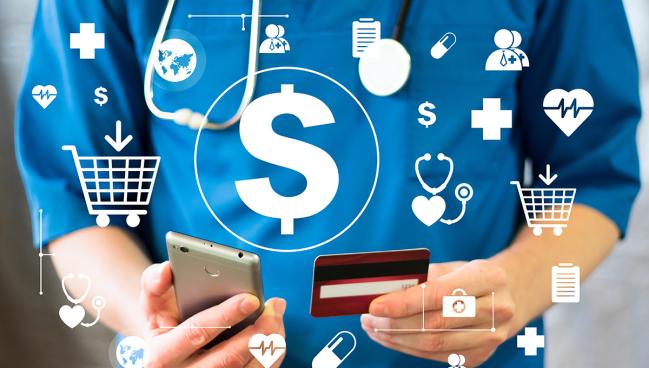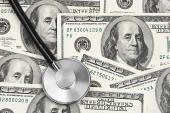Industry Payments Made to Cardiology Fellows Prompt Bias Concerns
Those who received payments during their last year of training were more than twice as likely to receive them after.

More than two-thirds of US cardiology fellows receive payments from industry—with this number jumping to 80% for those in procedure-intensive subspecialties—and the fellows who are offered the payments are more likely to then also receive them after graduation, according to new data.
With prior evidence showing that payments from pharmaceutical and device companies can sway physicians to preferentially use certain drugs and devices over others, the authors say their findings in young physicians at the start of their careers are especially worrisome.
“We obviously understand that physicians in training need to be learning about new drugs coming on the market, they need to learn about new medical devices, and in particular, in our field, they need to learn about new technologies they might be using in the cath lab, in the electrophysiology lab, etc,” lead author Sanket S. Dhruva, MD (University of California, San Francisco School of Medicine), told TCTMD. “But my feeling is that this does not need to come with a payment.”
Cardiology fellows are “in the formative steps of training and might be more susceptible to influence,” he added.
Currently, the Association of American Medical Colleges (AAMC) recommends policies “that prohibit the acceptance of any gifts from industry by physicians . . . and trainees.” Additionally, the Accreditation Council for Graduate Medical Education (ACGME) and the National Academy of Medicine (NAM) warn against the repercussions of industry gifts to those involved in medical education. While the Sunshine Act, passed in 2010, requires that all payments to US physicians be reported and accessible to the public through the Open Payments website—and certain states like Vermont have stricter laws in place prohibiting most gifts to physicians—enforcement of any rules for trainees seems to only occur at the hospital or program level, if at all.
“What this shows is that despite efforts over the years to try to make sure that training is evidence-based and as [free from] bias as possible, . . . I think it's pretty clear that there are still these potential conflicts of interest that are introduced into training programs,” Vinay Kini, MD (Weill Cornell Medical College, New York, NY), who was not involved in the study, told TCTMD. “The fact that this is still occurring requires some more creative solutions.”
Money Continues After Fellowship
For the study, published online Monday as a research letter in JAMA Internal Medicine, Dhruva and colleagues linked data from the ACGME and Open Payments databases to identify 5,533 early career cardiologists (median age at graduation 35 years; 21% female; 45% procedural specialties) who received general payments from drug and medical device manufacturers not related to research between July 2014 and June 2021.
In the year before graduation from training, 67% and 80% of those in nonprocedural and procedural specialties, respectively, received money from industry. Median payment amounts were $198 and $1,801 (only 11% of physicians received payments of at least $5,000) and the median numbers of payments were three and 17, respectively.
At a median of 3 years after graduation, 81% and 96% of physicians in nonprocedural and procedural specialties, respectively, received these payments, with the median amounts being $277 and $1,112. Payments of at least $5,000 were made to 15% of physicians during this time period.
Fellows who received payments in the year before graduation were more than twice as likely to receive them after (HR 2.12; 95% CI 1.89-2.37). Also, physicians in procedural subspecialties were more likely than those in nonprocedural specialties to receive any payments (HR 2.24; 95% CI 2.01-2.49) as well as those of at least $5,000 (HR 3.31; 95% CI 2.82-3.88). Men also were more likely than women overall to receive payments of at least $5,000 (HR 1.43; 95% CI 1.15-1.77).
We know that even small payments lead to some feeling of reciprocity, and my feeling is that we want clinical decisions in practice to be made based on evidence. Sanket S. Dhruva
Dhruva said the bulk of these payments likely came as meals and some travel expenses, especially for those in procedural fields who are flown to trainings around the country.
“It may feel like these payments are relatively small and insignificant—you can't even go out to dinner for a couple hundred dollars these days—but we know that there is some influence,” he said. “We know that even small payments lead to some feeling of reciprocity, and my feeling is that we want clinical decisions in practice to be made based on evidence. We want people to be looking at evidence and not have other influences outside of what the evidence shows, does this help patients, [and] what are the risks and benefits?”
Further, he said, it seems that if these payments start during fellowship, they are more likely to continue afterward. “They need to learn from industry. I just think there's no reason that it needs to be associated with a lunch or with a dinner,” Dhruva said, adding that stricter rules prohibiting this practice with fellows might help “curtail this practice and help us to find other avenues.”
‘Broad Lack of Oversight’
Kini agreed that most of the payments identified in this study are likely meals, “sometimes lavish,” and travel expenses, and while it might not seem like that big of a deal, “it can be something that can influence a physician's decision to use their device versus someone else's device.”
Regardless, training programs across the country seem to have latched on to this strategy of using industry to “outsource learning to those sponsored programs,” Kini said. “This is a trend that has been occurring now for the last many years,” especially as manufacturers have gotten more innovative with the drugs and devices they’ve put out into the world with the goal of having them used by as many physicians as possible.
“I don't mean to suggest that that's a bad thing,” he added. “I think that there's been so much advancement in the cardiology procedural specialties, and that largely comes from industry.”
But in an ideal world, individual fellowship programs should be doing this kind of training themselves, though that is easier said than done, he acknowledged. “Maybe there's a way where some of these trainings are accompanied by some sort of evidence-based approaches that also take into account other potential devices. But I think that the companies themselves are unlikely to take that on.”
This is a problem that’s likely to continue without a change in practice, Kini said, given that little enforcement seems to be done related to the ACGME, AAMC, or NAM recommendations. Even with the Sunshine Act, anybody can look up payments made to their physicians, “but I don’t know that many patients really are,” he pointed out. “Does anybody care? I’m not sure.”
Despite the “broad lack of oversight and a broad lack of any structure to try to keep training as commercial and bias free as possible,” Kini said what remains paramount is that the overall lessons related to how new technologies fit within the evidence base are taught to trainees. “That I think is something that you can learn during training and that fellowship programs should really strive to do,” he said.
Yael L. Maxwell is Senior Medical Journalist for TCTMD and Section Editor of TCTMD's Fellows Forum. She served as the inaugural…
Read Full BioSources
Dhruva SS, Han M, Jing Y, et al. Industry payments to cardiology fellows and early-career cardiologists. JAMA Intern Med. 2024;Epub ahead of print.
Disclosures
- Dhruva reports receiving grants from Arnold Ventures and funding from the US Department of Veterans Affairs during the conduct of the study, as well as serving on the Institute for Clinical and Economic Review California Technology Assessment Forum and the Medicare Evidence Development and Coverage Advisory Committee.
- Kini reports no relevant conflicts of interest.





Comments